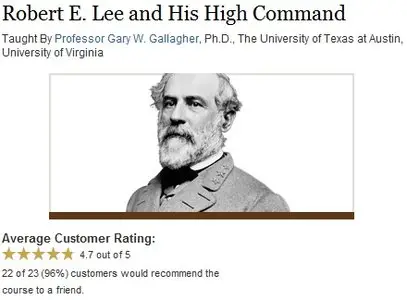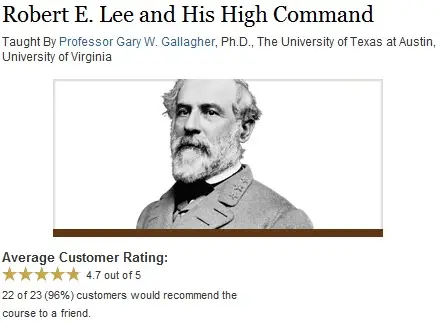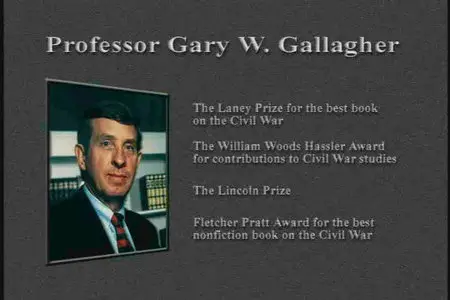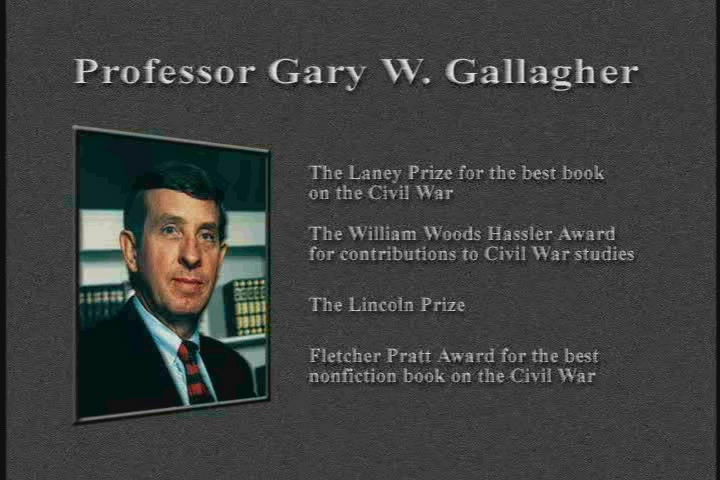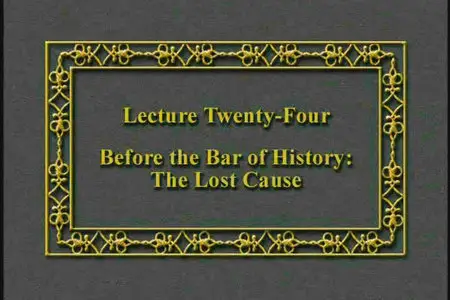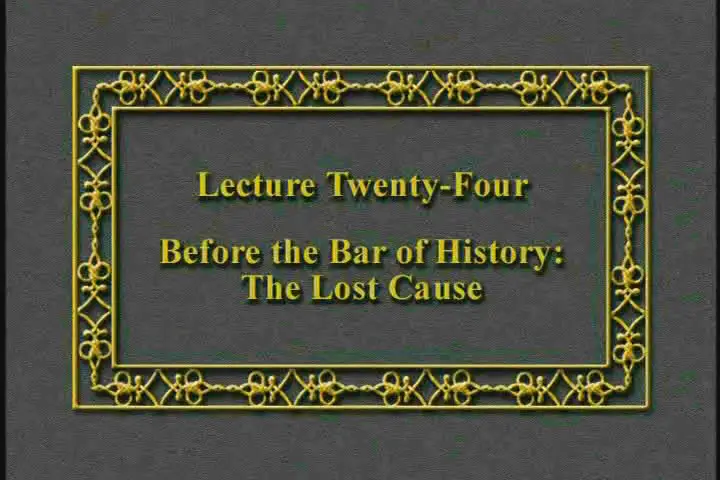TTC VIDEO - Robert E. Lee and His High Command (2011)
DVD-Rip | AVI | XviD MPEG4 @ 800 Kbit/s | 720x480 | MP3 Stereo @ 80 Kbit/s 22 KHz | 12 Hours | 4.44 GB
Genre: American Civil War, Education | Label: The Great Courses | Language: English | PDF Included
DVD-Rip | AVI | XviD MPEG4 @ 800 Kbit/s | 720x480 | MP3 Stereo @ 80 Kbit/s 22 KHz | 12 Hours | 4.44 GB
Genre: American Civil War, Education | Label: The Great Courses | Language: English | PDF Included
Few events have captivated students of American history like the Civil War. Its battles are analyzed repeatedly, studied and "what-ifed" by professional tacticians and tireless amateurs alike. Its profoundly dramatic implications and moments have no parallels in our history, whether it be friend fighting friend, the end of slavery, or an entire society and way of life burned away, sometimes literally. Its most striking personalities seem somehow outsized, magnified beyond the ability of books or even legend to contain them. Few among those personalities have ever held our attention like General Robert Edward Lee.
Few events have captivated students of American history like the Civil War.
Its battles are analyzed repeatedly, studied and "what-ifed" by professional tacticians and tireless amateurs alike.
Its profoundly dramatic implications and moments have no parallels in our history, whether it be friend fighting friend, the end of slavery, or an entire society and way of life burned away, sometimes literally.
Its most striking personalities seem somehow outsized, magnified beyond the ability of books or even legend to contain them.
Few among those personalities have ever held our attention like General Robert Edward Lee.
An Embodiment of the Confederacy Itself
With his Army of Northern Virginia, he came to embody the cause of the Confederacy itself, inspiring a commitment from troops and civilians that eventually overshadowed even those given to its political leaders and institutions.
How did this come to pass?
In a war that produced no other successful Confederate armies, how was Robert E. Lee able to create and inspire an army whose achievements resonated not only across the Confederacy but also in the North, as well as in foreign capitals such as London and Paris?
Answers to the Most-Asked Questions about Lee
This course addresses and answers the most-asked questions about Robert E. Lee and the men he chose to serve under him:
What was Lee actually like?
Was he someone whose character and ideas—as some have claimed—were mired in the past?
Was he really an "old-fashioned" general who was too much of a traditionalist and gentleman to fight the kind of modern, ruthless war demanded by the times?
Or was he a brilliant and aggressive strategist and tactician who understood exactly the kind of war he would need to wage, the size of his window of opportunity, and the kind of senior officers he would need if his strategy was to succeed?
How did he choose those officers, and what personal and tactical characteristics did they share?
What experiences shaped them?
Why did they succeed or fail?
How did what happened on the war’s extraordinarily bloody battlefields influence public opinion on the home fronts of both the Confederacy and the Union?
And how did that opinion, in turn, shape the actions of Lee and his officers?
Gain a New Understanding of How the War Unfolded
This course addresses these and other issues with an approach designed to appeal to everyone who wants to understand more about the Civil War and why it unfolded as it did:
It’s a course that will appeal whether your interest is in the strategy and tactics underlying its major battles or in the broader context within which those battles took place.
If you’re relatively new to exploring this conflict, these lectures offer a refreshingly balanced starting point.
And if you’re already knowledgeable, this course will deepen your appreciation of the decisions made by Lee and his generals and the implications they had both on and off the battlefield.
Perhaps more than anything else, you gain a tremendous depth of insight into how those decisions were a function of the individuals who made them. You learn how Lee’s choices in elevating these 15 men to high command influenced, for better or worse, the course of the war.
Guiding you through this human and strategic drama is Professor Gary W. Gallagher, whose 48-lecture course on The American Civil War remains one of our most popular.
Professor Gallagher’s teaching, writing, and research skills have made him one of the most respected Civil War authorities in the world.
Meet the Men Who Waged the Confederacy’s War
As you would expect, these lectures contain vivid portraits of the men whose names are familiar to anyone with even a passing curiosity about this great conflict:
Lee himself, whose striking appearance undoubtedly helped contribute to the almost mystical aura with which many authors have endowed him but whose experiences serving under the famous Winfield Scott in the war with Mexico taught him invaluable practical lessons about modern warfare.
Lee’s skill at managing military resources and his awareness that audacity and ruthless aggressiveness can contribute to victory against a more powerful opponent threatened to disrupt the Union war effort more than once.
"Stonewall" Jackson, whose dogged purpose and initiative helped forge, with Lee, a military partnership second only to that of Ulysses S. Grant and William Tecumseh Sherman.
"Jeb" Stuart, the great cavalryman whose flamboyant battle dress, complete with scarlet-lined cape, yellow sash, and an ostrich plume in his hat, belied his superb skills at reconnaissance and screening, the crucial responsibilities of Civil War cavalry
James Longstreet, whom Lee warmly greeted as "my old war-horse" and who served as Lee’s senior subordinate throughout Lee’s tenure at the head of the Army of Northern Virginia.
And you’ll meet others as well, from the profane and acerbic Jubal A. Early, a West Pointer who had chosen law over the military before joining the Confederate forces, to a fascinating group of younger officers.
You also learn how Lee’s officers were often distinguished by extraordinary aggressiveness and courage on the battlefield, often at great personal cost.
A Human-Sized Look At the War
Among them was a young general named Stephen Dodson Ramseur, who was mortally wounded at the Battle of Cedar Creek.
The retreating medical wagon carrying him from the battlefield was captured by Union forces. And Professor Gallagher paints a deeply moving scene of several Union officers who had been cadets with Ramseur at West Point—including George Armstrong Custer—coming to sit with him through the night until he died.
This West Point connection was not an isolated incident.
With a wealth of officers who had been trained at West Point—Lee himself had been superintendent—along with those who had come from prestigious academies such as the Virginia Military Institute and The Citadel, the Confederacy had a distinct advantage in the depth of its officer corps.
This was especially evident during the first two years of the war, when many young Union officers were still gaining experience in military basics.
The Confederacy’s Extraordinary Problem of Attrition
Ramseur’s death also illuminates the extraordinary problem of attrition faced by Lee.
You learn that in this last war in which generals actually commanded from the front, attrition among the Confederacy’s generals sometimes exceeded 25 to 30 percent in a single campaign.
The struggle to replace them forms a leitmotif throughout the history of Lee’s army.
Examine the Idea of the "Lost Cause"
Professor Gallagher concludes the course with a highly critical look at the body of post-war writings embodying the viewpoint that came to be known as the "Lost Cause."
This viewpoint, much of it orchestrated by Jubal Early, shunted aside the issue of slavery and used States’ rights and other arguments to defend the Confederacy’s actions. It emphasized Lee’s greatness and the Union’s massive advantage in men and other resources.
You learn that although most modern historians have long abandoned it, the "Lost Cause" continues to be evident in popular conceptions of the war.


